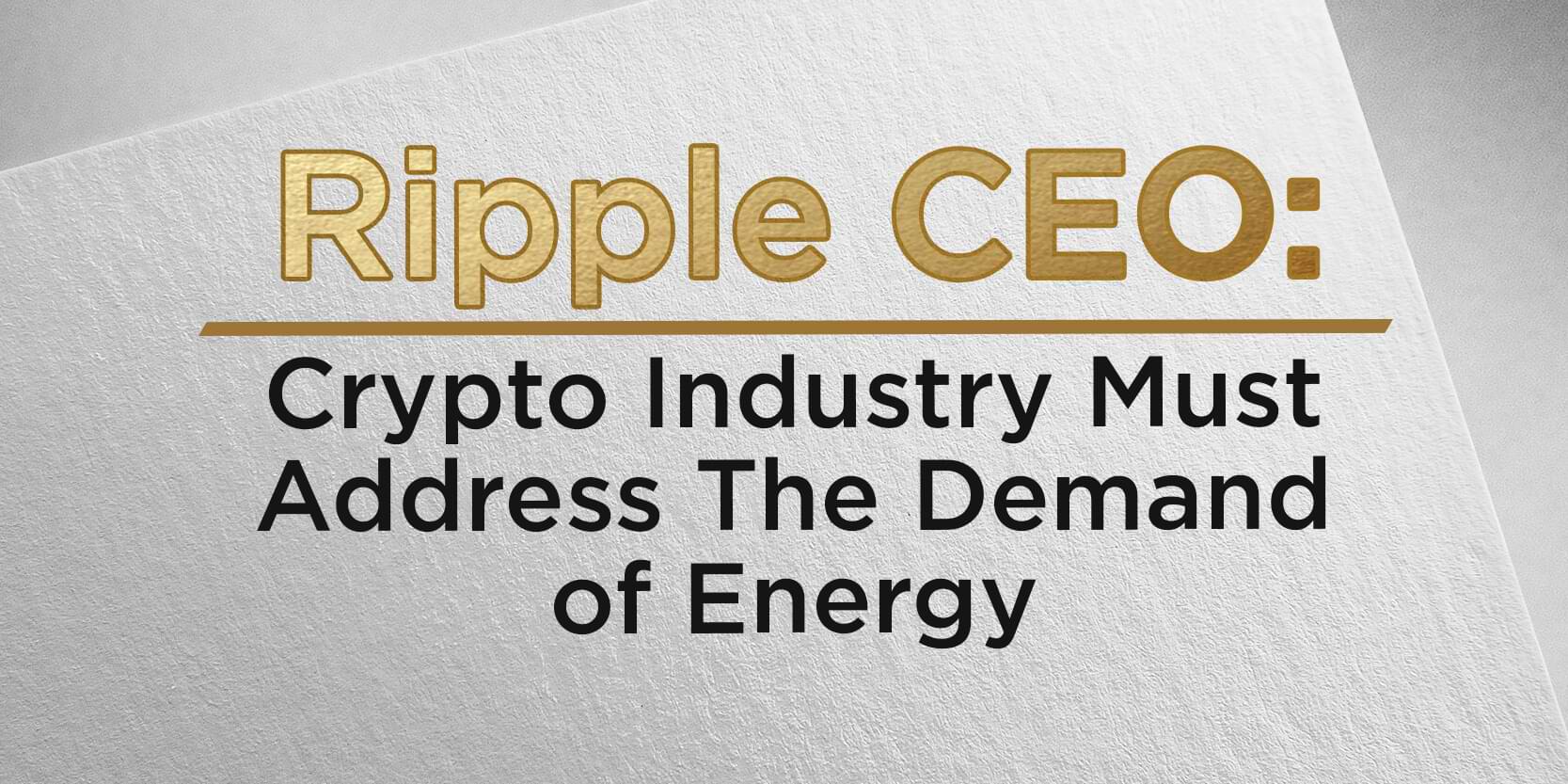
Ripple CEO: Crypto Industry Must Address The Demand of Energy
In the past year, the cryptocurrency market has gone through its biggest growth spurt yet, starting with Bitcoin’s eventful bull run, which brought BTC prices up by over 610% at its highest peak. Unlike previous bear markets, this year’s is a little different—particularly because institutional investors, including Tesla and PayPal, have joined in the fray. Moreover, other blockchain-based innovations, such as NFTs, have brought colossal interest among the most unlikely consumer niches, bringing in new faces and a lot more liquidity to the crypto economy.
However, as cryptocurrency gains more and more mainstream attention, its flaws are also starting to come to light. Recently, there has been debate over cryptocurrency’s massive energy consumption and its growing impact on the environment.
Real Problems of Crypto Technologies
In an interview with CNN, Ripple CEO Brad Garlinghouse brought to light the environmental impact of cryptocurrency transactions. While he believes that Bitcoin is a key player that’s unlikely to disappear from the digital currency landscape, he also acknowledges that the blockchain’s mining algorithm is swirling up a huge energy problem.
Bitcoin employs the Proof-of-Work algorithm, which is a mining process that necessitates all miners—an estimated one million in total—to race to solve a complex cryptographic puzzle. The first to finish will have unlocked the layer of security on the blockchain, allowing the miner to create a new block containing approximately 1 MB of transactions. Due to the competitive nature of this algorithm, most miners use special devices called ASIC rigs, which are extremely powerful mining machines—more so than a typical GPU. But with great power comes great energy costs, and multiply that by almost a million, and you have a recipe for an ozone disaster.

The University of Cambridge released a live Bitcoin energy consumption index, which estimates that miners consume about 140 terawatt-hours of electricity per year—a value greater than that of the entirety of Argentina. These numbers are alarming as global sustainability is already a huge issue, even without cryptocurrency in the equation. The earth simply can’t sustain any more unnecessary attacks on the environment, hence why transactions by Proof-of-Work blockchains need to be addressed.
Efficient Transactions
Cryptocurrencies can only be sustainably used for day to day transactions if they aren’t causing major concern to the environment. For instance, Ripple (XRP) is pre-mined, which means that it offers no decentralised mining system that investors and eager miners can participate in. It’s not an attractive feature to supporters of the traditional blockchain ecosystem (which values complete decentralisation), but it’s a significantly more eco-friendly option compared to the current state of Bitcoin. If you’re interested in using cryptocurrency for transactions, then it’s theoretically more ethical to opt for coins like XRP, as you won’t be contributing to environmental degradation.
However, it doesn’t mean that Bitcoin can’t change. Ethereum is an example of a blockchain that utilises the same Proof-of-Work mining algorithm, but its migration to 2.0 will see a transition to the Proof-of-Stake. While there is no news of Bitcoin changing hands the same way as Ethereum, change is necessary given the less-than-favourable state of the environment.
Digital Assets vs Environmental Cost
Garlinghouse’s call for more sustainable cryptocurrency is only one of many other concerns regarding the environmental impact of digital assets. As blockchain continues to grow in popularity, derivatives of its technology are also amassing huge interest among the crypto community. Non-fungible tokens (NFTs) make up the latest trend in the digital art world. They offer immutable ownership to digital assets, some of which have sold for millions of dollars.
However, most NFTs are minted on the Ethereum blockchain, which still hasn’t transitioned to the Proof-of-Stake. What’s essentially happening is that innovations are breaching the virtual world faster than blockchains can keep up with, making it difficult to balance foundational issues—like sustainability—against these viral trends. The world is currently juggling between lightning-fast innovation and ethics—and most of the time, the former wins at the cost of biodiversity.
What Could Limit The Success of Technologies
The issue with Bitcoin power consumption is a massive roadblock to the coin’s success. Given how sustainability is at the forefront of the younger generation’s—the same cohort most likely to support cryptocurrency—concerns, it’s not likely for BTC to become usable in daily transactions until it solves its problem.
Likewise, the concerns over sustainability and the environment are wake-up calls to innovators who are bringing in newness to the digital economy. It’s more important than ever for developers to possess enough foresight to see past worldly issues and ensure that new technology doesn’t add to pressing global issues. Otherwise, it’s not likely for them to see long-term success.





Leave a Reply
Add comment ×